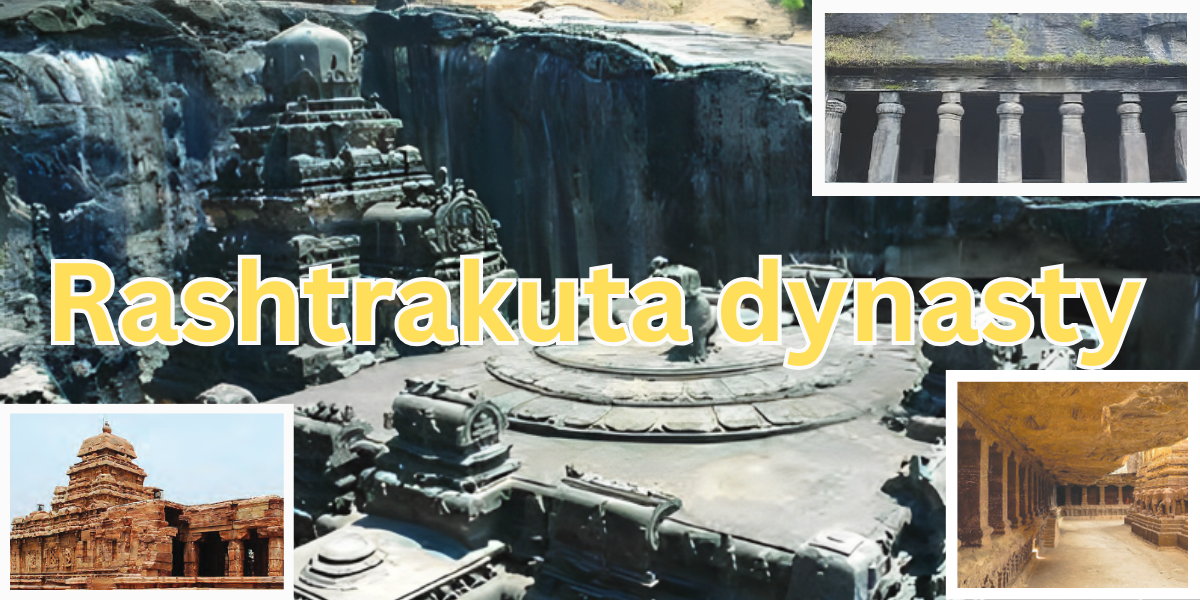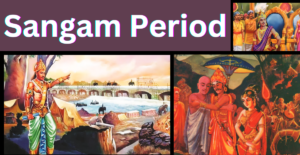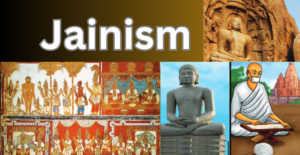Rashtrakuta dynasty
Introduction:
Rashtrakuta dynasty ruled the Deccan from the 8th to the 10th century.He not only ruled the Deccan, but also the far south and the Gangetic plains.Kannada was their mother tongue. They are from Karnataka.
Kings of Rashtrakuta dynasty :
| Name of the King | Period of Rule |
| Tantidurga | 735–756 |
| Krishna I | 756–774 |
| Govinda II | 774–780 |
| Dhruva Taravarsha | 780–793 |
| Govinda III | 793–814 |
| Amoghavarsha I | 814–878 |
| Krishna II | 878–914 |
| Indra III | 914–929 |
| Amoghavarsha II | 929–930 |
| Govinda IV | 930–936 |
| Amoghavarsha III | 936–939 |
| Krishna III | 939–967 |
| Kotika Amoghavarsha | 967–972 |
| Garga II | 972–973 |
| Indra IV | 973–982 |
| Tailappa II | 982–997 |
| Satyashraya | 997–1008 |
Tantidurkar (735-756 CE):
Tantidurga was the founder of the Rashtrakuta dynasty.He served as a high official of the Chalukyas and established the rule by defeating Keerthivarman II in battle.He initiated the expansion of the Rashtrakuta kingdom in the Deccan.
Krishna I (756-774 CE):
Krishna I, the son of Tandi Durga, initiated the expansion of the empire.During his reign it witnessed conflict with the Chalukyas and the Pallavas.He started the construction of the Kailasa temple, which was cut with the rock of Ellora.
Govinda III (793-814 CE):
Govinda III emerged as a powerful Rashtrakuta king.He saw military victories against the Preschools in the east and the Pratisaras in the north.He was a scholar in art and literature.
Amoghavarsha I (814-878 CE):
Amoghavarsha I, the son of Govinda III, was a certain suitable ruler and scholar.He established the new capital at Manyakotta.His port is Broach.He embraced samanam by Jina Sena.
Krishna II (878-914 CE):
Krishna II was the son of Amoga Varsha I.He faced internal conflicts of his regime.During his reign he saw invasions of the Chalukyas and later by the Chola king Aditya I.He was later defeated by Paranthaka Chola in 914.
Indra III (914-929 CE):
Indra III, the grandson of Amoghavarsha I, re-established the empire.There were also other titles such as Nityavarsha, Rattakandarapa, Keerthi-Narayana and Rajamaradanta.He was followed by his son Amoga Varsha II who ascended the throne. He ruled for only one year.
Krishna III (939-967 CE):
He was also their last powerful and efficient king, even the Raashta.Krishna III defeated the Cholas in the battle of Thakkolam and captured Tanjore.Later, he built the Krishnareswarar temple in Rameswaram.He waged a war with the northern Indian states. After his death, the Rashtrakutas lost their supremacy.
Literary Books:
Kavi Rajamarga was written by Amoga Varsha I (785 CE). It is considered to be the first book on poems and rhetoric of Kannada.
- Adi Puranam: Written by Rishabha Deva. An epic describing the life of 24 Jain tirthankaras.
- Vikramarjuna: An epic poem based on the Mahabharata. Harikesari depicted the place of Arjuna.
- Chandra Purana: Written by Ponna. It emphasizes the moral and ethical values of the Mahabharata.
- Prashnondhara Ratnamalika: Written by Amoga Varsha I. It speaks about the principles of The Saiva Vedas. Written in Sanskrit.
- Vadrādhane: Written by Sivakotiyachari. The oldest prose in Kannada depicts the lives of Jain priests.
- Kanakarathara: Written by Sridharavi. A mathematical article that talks about arithmetic, algebra, and geometry.
Rashtrakuta dynasty Art and Architecture :
Elephant Island :
Sri Puri is known as Karapuri by the locals.It was developed on an island near Mumbai.There is a three-headed idol of Tri-Moortha Shiva cut in a rock here.The big elephant figure is also known as Elephanta because of the presence of a scenic Warrior.Although often claimed to belong to the Chalukyas, some elements refer to the influence of the Rashtrakutas.
Ellora and Kailasanathar Temple:
It is located at Ajanta in Aurangabad, Maharashtra.The monolith was carved in rock.It is situated on the Sarnath Hill.There are more than 30 cave temples. One of them is the Kailasanathar temple.It was built during the reign of Krishna I. Kondu was built with an area of approximately 60 thousand square feet.There is a 90-foot vimana similar to that of Mamallapuram. It was built in the Dravidian sky.The 12 Buddhist caves were meant for priests to stay and educate their disciples. It has images of Buddha, meditative Buddha, teaching Buddha and Buddha touching the earth on his right index finger.There are female deities like Tara, Kathiravanidhara, Sundha, Vanjarateswari, Mahamoori, Sujatha, Pandhara and Priyakutty in the Buddhist cave.All the roofs are painted.Most of the caves remained incomplete.Except for the Kailasanathar temple, everything is square in shape.
Pattadagal, Virupaksha Temple:
It is located in Pattadagal in Karnataka.UNESCO World Heritage Site. It is built in dravidian and north Indian style.The temple is dedicated to Lord Shiva.It has pyramid roofs in the Dravidian style and pillars and arches in the North Indian style.
Conclusion of Rashtrakuta dynasty :
Emerging from the Deccan region in the 8th century, the Rashtrakutas forged a remarkable empire through a combination of military prowess and astute political maneuvering. They engaged in conflicts with formidable adversaries such as the Palas and Cholas, yet demonstrated diplomatic finesse by forming strategic alliances. Within their dominion, a well-organized administration and thriving trade routes contributed to prosperity. Emperors like Amoghavarsha and Krishna III played pivotal roles in fostering a cultural renaissance, marking a golden age for the Rashtrakutas.





Pingback: Sangam Age |